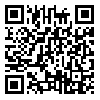BibTeX | RIS | EndNote | Medlars | ProCite | Reference Manager | RefWorks
Send citation to:
URL: http://tumj.tums.ac.ir/article-1-383-en.html
Normal
0
false
false
false
EN-US
X-NONE
AR-SA
MicrosoftInternetExplorer4
Background: Identification
of the determatophytosis species and superficial mycosis agents may be useful
in directing the survey for environmental and animal sources of infection to
educate the danger of acquiring infections from infected persons and other
animals. Based on this background the identification of cutaneous mycosis
distribution was the main purpose.
Methods: From March 2005 to Feb 2009 we examined 5500 patients suspected to superficial and cutaneous
mycosis referred to medical mycology labs in Tehran, Iran for Medical Mycology
examination. Skin, hair and nail sampling were taken by scraping from patients
and collected for diagnosis. Diagnosis was confirmed by direct microscopy and
culture according to the mycology routine laboratory methods.
Results: A total of 2271 cases (41.3%) suffered from superficial and cutaneous mycosis. The
most common infections were dermatophytosis 1279 cases (56.31%), Tinea Versicolor 356 cases (15.47%), Erythersma 283 cases (12.46%), cutaneous candidiosis 243 cases (10.7%) and
sacrophytic cutaneous mycosis 110 cases (4.83%). Tichophyton mentagrophytes was the most
common etiological agent with 198 cases (41.56%). The most common clinical type of cutaneous
candidiasis was onychomycosis and Candida albicans was the most common
etiological agent. The common sites of involvement of tinea versicolor were
neck and trunk and Malassezia globosa was most common etiologic agent.
Conclusion: This study highlights a common problem (Antropophilic
species) in Tehran and suggests that further measures regarding public health
and especially personal hygiene should be undertaken to reduce the risk of
superficial and cutaneous mycoses.
| Rights and permissions | |
 |
This work is licensed under a Creative Commons Attribution-NonCommercial 4.0 International License. |





